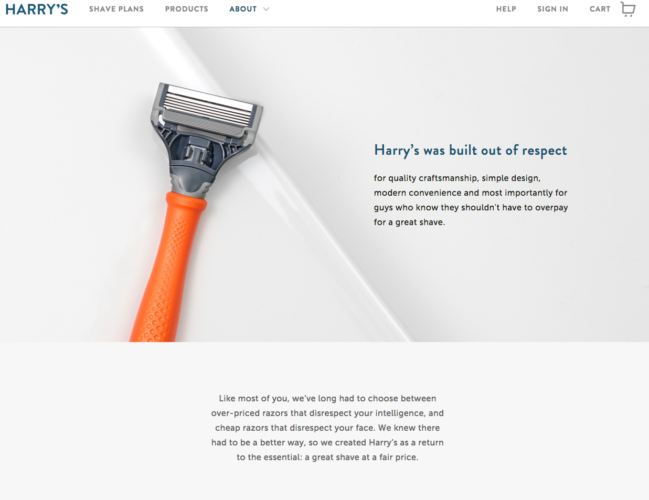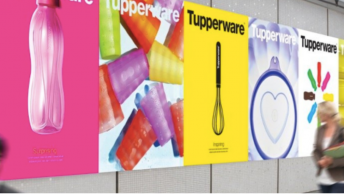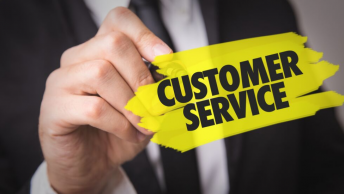Branding is a key differentiator and a major reason why some startups are super successful while others are not. Beyond building a cool new piece of tech, you need branding your startup. Startups need to connect with people and get them to buy into their yet-to-be-proven solution.
Here are five things startups should do to differentiate themselves effectively with branding.
5 Steps to Branding Your Startup
1. Know Your Target Market
The first step to branding your startup is gaining a complete understanding of your target market. Who are you trying to reach? Think about who you want to experience your brand.
Once you’ve determined your target audience, everything in your branding should connect back to it. In short, your ideal customers should become part of your startup’s identity—after all, you can’t succeed without them.
SEE ALSO: 5 Tools to Survey Your Target Audience
A failure to connect with your target market will lead to long-term failure; therefore, it’s important to constantly receive feedback to determine how your customers perceive your brand and product.
Survey your early customers with questions such as:
- How would you describe our product to a friend?
- Tell us how you’d feel if you were no longer able to use our product.
- How can we improve our product to better meet your needs?
Your goal should be building passionate customers who will share their experience with others, and that comes from correctly identifying your target market.
2. Sell Your Story
If you’re interested in successfully branding your startup, you must sell your story. A major challenge you will face as part of the startup phase is people may not instantly recognize who you are or what you do.
Building your story not only helps you focus on your company identity and culture, but it’s a memorable way for your clients and customers to identify with your brand on a more personal level. Sell an experience before selling a product.

One superb example is Harry’s, a startup venture company that has exploded and is now a competitive player in the shaving market. First Round Review analyzed this company in detail, and their success is built in part on their story.
Harry’s has used their story to turn customers into advocates by selling not just a product but also an experience. Their story defines the purpose of the company and creates something their customers can identify with: a positive and inspiring reason to shave.
Successful branding is closely tied to a successful story, and by using that story as a jumping off point, you add to your own credibility.
SEE ALSO: How to Tell Your Digital Brand Story
3. Refine Your Language and Image
Now that you’ve identified your target market and put together your story, you need to pull together visual language and writing that resonates. When you ask some entrepreneurs what it is they do, they offer lengthy explanations of the minutiae of their startups.
Refine your language so that you can easily define who you are and what you do. Keep it brief. Keep it clear. Be consistent.
Your company name should clearly project your image

Online travel startup iExplore evolved from Conquest Travel (deemed too macho) to Adventure Experts (too vague—adventure means too many things to too many people). They finally settled on iExplore, which conveyed the mood they were looking for and communicated the Internet-based nature of the company.
Made up words can also potentially become the language of an industry (think Google), and can be more memorable than a generic name.
Looks Matter
Looks are also important for branding your startup. When it comes to visual branding, fonts, colors, logos, etc. all contribute to your image and purpose.
When applied correctly, these elements can quickly define and communicate the mood and values you want to give your target audience.
Images are easy to share across social media platforms and can offer a first impression of your company. Make sure your visual output is a reflection of your target market and story.
SEE ALSO: 5 Hacks to Beat the Instagram Algorithm
4. Be Memorable
Create experiences that are hard to forget. Use your brand to get creative and create something that your customers will remember. Everyone can offer great customer service and a passionate team, but what is it that makes you stand out from the crowd?
Some companies have made moves towards becoming cause-driven businesses. By finding a cause that ties closely with your brand, you can build your reputation as a company that cares and attract cause-driven consumers.
Being memorable can also be a way to defy expectations. Cards Against Humanity, a cheeky and sometimes bawdy party game took advantage of the Black Friday sales. What Cards Against Humanity offered was literal bull poop (from a cattle ranch in Texas.)

All units were sold quickly, but it wasn’t until people started to receive their packages that the fun started. Instead of a game, customers received a piece of petrified poop.
This hilariously irreverent campaign was a surprising hit among its customers and it tied into their brand perfectly, creating a memorable Thanksgiving weekend.
5. Maximize Your Visibility
So you’ve created a unique visual and verbal story—now it’s time to leverage assets across digital channels and integrate your marketing campaigns.
The goal is to reach your target market through a coordinated message across multiple channels. Target marketing to your user demographics, which sounds obvious, but it’s necessary. Luxury brands don’t sell at discount stores, for example.
Attack your social media outlets simultaneously and use them as a way to reinforce your brand; think about “share-ability”. We talked about using visuals to reinforce your brand, and moments captured in photos are some of the easiest moments for customers to share.
In Conclusion
If you link everything together: target market, brand story, visual and written language, and memorable campaigns… creating marketing assets for all the platforms you’re active on should be simple and your brand will feel aligned.
So there you have it. Hopefully, this sheds some light on how to best tailor your branding to maximize customer experience and generate passionate customers who can advocate on your behalf, thus creating more traction and growth for your startup.
Have any tips to add for branding your startup? Let me know in the comments












